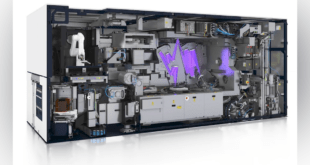Photonic sensors and detectors are devices that utilize light or optical signals to measure, detect, and analyze various physical quantities. They play a crucial role in a wide range of applications across industries such as telecommunications, healthcare, aerospace, automotive, environmental monitoring, and many others. These sensors and detectors leverage the principles of optics and photonics to capture, process, and interpret light-based information.
Photonic sensors are designed to detect and measure physical parameters by converting optical signals into measurable electrical or optical signals. They offer several advantages over traditional electronic sensors, including high sensitivity, fast response time, immunity to electromagnetic interference, non-contact sensing capabilities, and the ability to operate across a wide dynamic range. Photonic detectors, also known as light detectors, are devices that convert light signals into electrical signals. They are essential for detecting and measuring light intensity, wavelength, and other optical parameters.
In today’s rapidly evolving technological landscape, photonic sensors and detectors have emerged as critical components across various industries and applications. Their numerous advantages over traditional electronic sensors and detectors make them an increasingly popular choice. This article explores the expanding market for photonic sensors and detectors, their advantages, and the driving forces behind their growing demand.
Types of different Photonic sensors and detectors
- Photodiodes: Photodiodes are semiconductor devices that generate a current or voltage when exposed to light. They are widely used for general light detection, light detection and ranging (LIDAR), optical communication, and imaging applications.
- Phototransistors: Phototransistors are similar to photodiodes but have an additional amplification stage. They provide higher sensitivity and can be used in applications requiring low light-level detection. Phototransistors are used in a variety of applications, including night vision, security systems, and motion detectors.
- Image Sensors: Image sensors, such as charge-coupled devices (CCDs) and complementary metal-oxide-semiconductor (CMOS) sensors, convert light into electronic signals to capture images. They are made up of an array of photodiodes, each of which detects a single pixel of light. The electrical signals from the photodiodes are then used to create an image. Image sensors are used in a wide variety of applications, including digital cameras, security cameras, and medical imaging devices.
- Photomultiplier Tubes (PMTs): PMTs are highly sensitive detectors that convert photons into an electrical current. They offer high gain and are utilized in low-light-level applications such as scientific research, medical imaging, and nuclear radiation detection.
- Avalanche Photodiodes (APDs): APDs are semiconductor devices that use an internal avalanche multiplication process to achieve higher sensitivity than standard photodiodes. They are employed in applications requiring high-speed, low-light-level detection, such as fiber optic communication and LIDAR systems.
- Laser Diodes: Laser diodes are semiconductor devices that emit coherent light when electrically driven. They find applications in telecommunications, barcode scanners, laser printers, and various industrial processes.
- Fiber Optic Sensors: Fiber optic sensors use optical fibers to transmit and detect light for sensing applications. They are made up of a thin fiber of glass or plastic that is coated with a reflective material. When light is shined into the fiber, it is reflected back and forth along the length of the fiber. They can measure parameters such as temperature, pressure, strain, and refractive index. Fiber optic sensors are widely used in industries such as aerospace, oil and gas, and structural health monitoring.
- Spectrometers: Spectrometers are instruments that analyze the intensity and wavelength distribution of light. They enable the identification and quantification of different components in a sample and are used in fields like chemistry, biology, environmental monitoring, and materials analysis.
- Silicon Photomultipliers (SiPMs): SiPMs are solid-state detectors that consist of an array of single-photon avalanche diodes (SPADs) connected in parallel. They offer high photon detection efficiency and time resolution, making them suitable for applications such as positron emission tomography (PET) and high-energy physics.
- Gas and Chemical Sensors: These sensors use specific materials or coatings that react with certain gases or chemicals to produce an optical signal change. They find applications in environmental monitoring, industrial safety, and gas detection.
These are just a few examples of the different types of photonic sensors and detectors available. The selection of a specific type depends on the intended application, sensitivity requirements, wavelength range, speed, and other specific parameters.
Unleashing the Power of Photonic Sensors and Detectors:
Photonic sensors and detectors offer a wide array of advantages that have positioned them as indispensable tools in diverse industries. These advantages include:
- High sensitivity: Photonic sensors and detectors exhibit exceptional sensitivity to light, enabling them to detect even the slightest changes in optical signals. This heightened sensitivity is crucial in applications that demand precise measurements and real-time monitoring.
- Wide dynamic range: These sensors can operate across a broad range of optical power levels, allowing them to capture signals of varying intensities accurately. This versatility is particularly valuable in applications where the optical power levels can fluctuate significantly.
- Fast response time: Photonic sensors and detectors exhibit rapid response times, making them well-suited for time-sensitive applications. Their ability to provide real-time data enables quick decision-making and enhances overall system performance.
- Non-contact sensing: Many photonic sensors and detectors can operate without physical contact with the object being measured. This capability is advantageous when dealing with fragile or sensitive materials, where physical contact could alter the measurements or cause damage.
- Immunity to electromagnetic interference: Photonic sensors and detectors are impervious to electromagnetic interference, making them ideal for applications in environments with high levels of electrical noise. This immunity ensures reliable and accurate measurements, even in challenging operational conditions.
- Small size and multiplexing capability: Photonic sensors and detectors can be designed in compact form factors, making them suitable for applications with limited space. Additionally, they can be multiplexed, enabling distributed sensing over large distances, a valuable feature in scenarios requiring extensive coverage.
Market Growth
The growth of the global photonic sensors market, projected to reach $94.2 billion by 2030, is driven by several key factors:
- Advancements in Photonic Technology: Continuous research and development in photonic technology have led to significant innovations, enhancing the capabilities and applications of photonic sensors.
- Rising demand across industries: Various sectors, including military, homeland security, industrial processes, transportation, biomedical, and renewable energy, rely on accurate and dependable sensing technologies. The increasing need for precise and reliable data drives the demand for photonic sensors and detectors in these industries.
Increasing Demand for Fiber Optics: The surge in demand for fiber optic technology, which is integral to photonic sensors, is a major driver. Fiber optics are widely used in telecommunications, medical diagnostics, and other industries.
- Growth of the Internet of Things (IoT): The rapid expansion of IoT has significantly boosted the demand for photonic sensors. IoT devices rely on sensors for data collection and communication, making photonic sensors crucial for the development of smart technologies.
- Rising Adoption in Medical and Healthcare: Photonic sensors are increasingly used in medical diagnostics and healthcare applications, such as imaging and monitoring, due to their precision and non-invasive nature.
- Industrial Automation and Manufacturing: The trend towards automation in various industries has led to increased use of photonic sensors for monitoring and control processes, ensuring higher efficiency and safety.
- Environmental Monitoring: Growing environmental concerns and the need for monitoring pollution levels have driven the adoption of photonic sensors in environmental applications.
- Adoption of smart sensors and automation: The growing adoption of smart sensors and the increasing trend towards automation in industries propel the demand for advanced sensing technologies. Photonic sensors and detectors play a crucial role in enabling intelligent systems, enhancing efficiency, and enabling data-driven decision-making.
- Technological advancements: Ongoing technological advancements are expected to enhance the performance and functionality of photonic sensors and detectors further. Continuous research and development efforts are driving improvements in sensitivity, response time, and integration capabilities, unlocking new possibilities for advanced sensing applications.
- Government Initiatives and Funding: Supportive government policies and funding for research in photonic technologies have also played a significant role in market growth.
For deeper understanding of photonics sensors and applications please visit: Photonic Sensors and Detectors: From Fundamentals to Cutting-Edge Applications
Top photonic sensors and detectors providers
While the photonic sensors and detectors market is highly dynamic and constantly evolving, there are several key companies that are prominent providers in this field. Here are some of the top photonic sensors and detectors providers:
- Hamamatsu Photonics: Hamamatsu Photonics is a leading global manufacturer of photonic sensors and detectors, offering a wide range of products for various applications. They specialize in photomultiplier tubes (PMTs), photodiodes, image sensors, spectrometers, and light sources.
- Thorlabs: Thorlabs is a well-known provider of optical equipment and components, including photonic sensors and detectors. Their product portfolio covers a broad spectrum of applications, such as fiber optic sensors, spectrometers, power meters, photodetectors, and laser diodes.
- OMRON Corporation: OMRON Corporation is a multinational electronics company that offers a diverse range of sensing and control solutions. They provide photonic sensors for industrial automation, including photoelectric sensors, fiber optic sensors, and laser sensors.
- Newport Corporation (now part of MKS Instruments): Newport Corporation is a renowned supplier of advanced photonics solutions. Their product offerings include photodetectors, photomultiplier tubes (PMTs), laser diode modules, optical power meters, and spectrometers.
- First Sensor AG: First Sensor is a leading provider of advanced sensor solutions, including photonic sensors and detectors. Their product range encompasses photodiodes, phototransistors, position-sensitive detectors (PSDs), and other optical sensing devices.
- AMS AG: AMS AG (formerly Applied Micro Sensors) is a global semiconductor company specializing in sensor solutions. They offer photonic sensors and detectors for applications such as gesture recognition, ambient light sensing, and proximity sensing.
- Teledyne Technologies: Teledyne Technologies is a diversified technology company that provides a wide range of sensing and instrumentation solutions. They offer photonic sensors and detectors, including photomultiplier tubes, photodiodes, and solid-state imaging sensors.
- Excelitas Technologies: Excelitas Technologies is a leading provider of innovative photonics solutions. They offer a comprehensive range of sensors and detectors, including photodiodes, avalanche photodiodes (APDs), and silicon photomultipliers (SiPMs).
It’s worth noting that the photonic sensors and detectors market is highly competitive, and there are many other reputable companies contributing to this field. The selection of a specific provider may depend on the application requirements, industry focus, and geographical location.
Conclusion:
The market for photonic sensors and detectors is expanding rapidly, driven by their numerous advantages and the increasing demand for precise and reliable sensing technologies. As technology continues to evolve, these sensors will become even more attractive, offering enhanced performance and functionality. The growing adoption of smart sensors and the trend towards automation further fuels the demand for photonic sensors. With their ability to provide high sensitivity, fast response times, and non-contact sensing, photonic sensors and detectors are empowering advanced sensing applications across industries, revolutionizing the way we perceive and interact with the world around us.
 International Defense Security & Technology Your trusted Source for News, Research and Analysis
International Defense Security & Technology Your trusted Source for News, Research and Analysis

